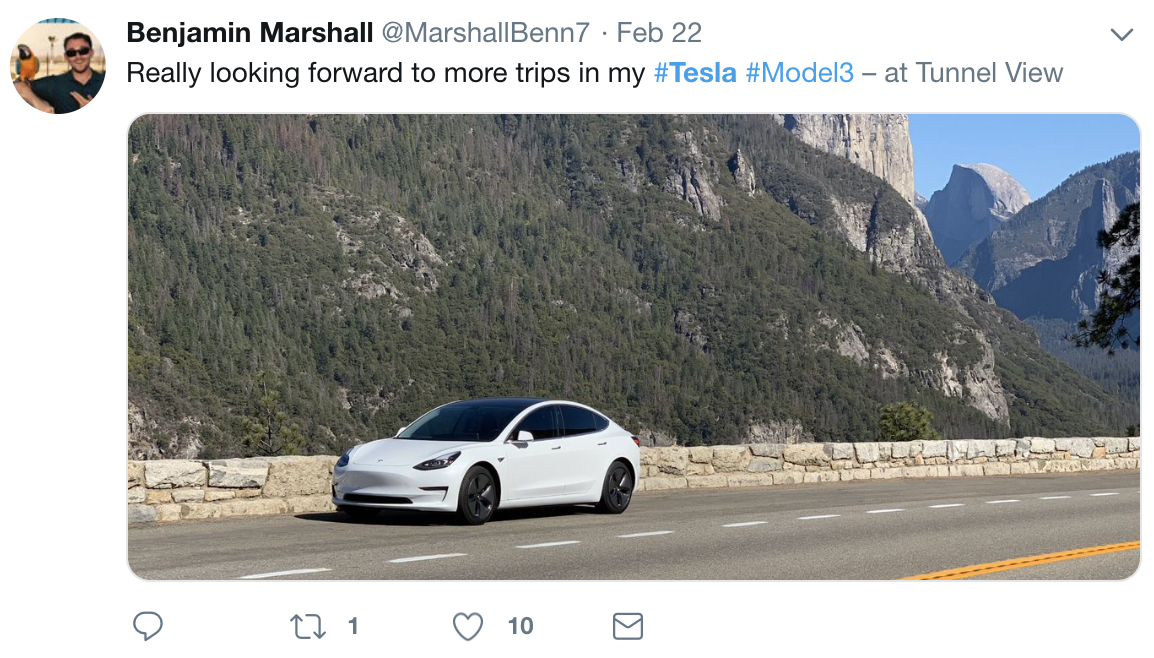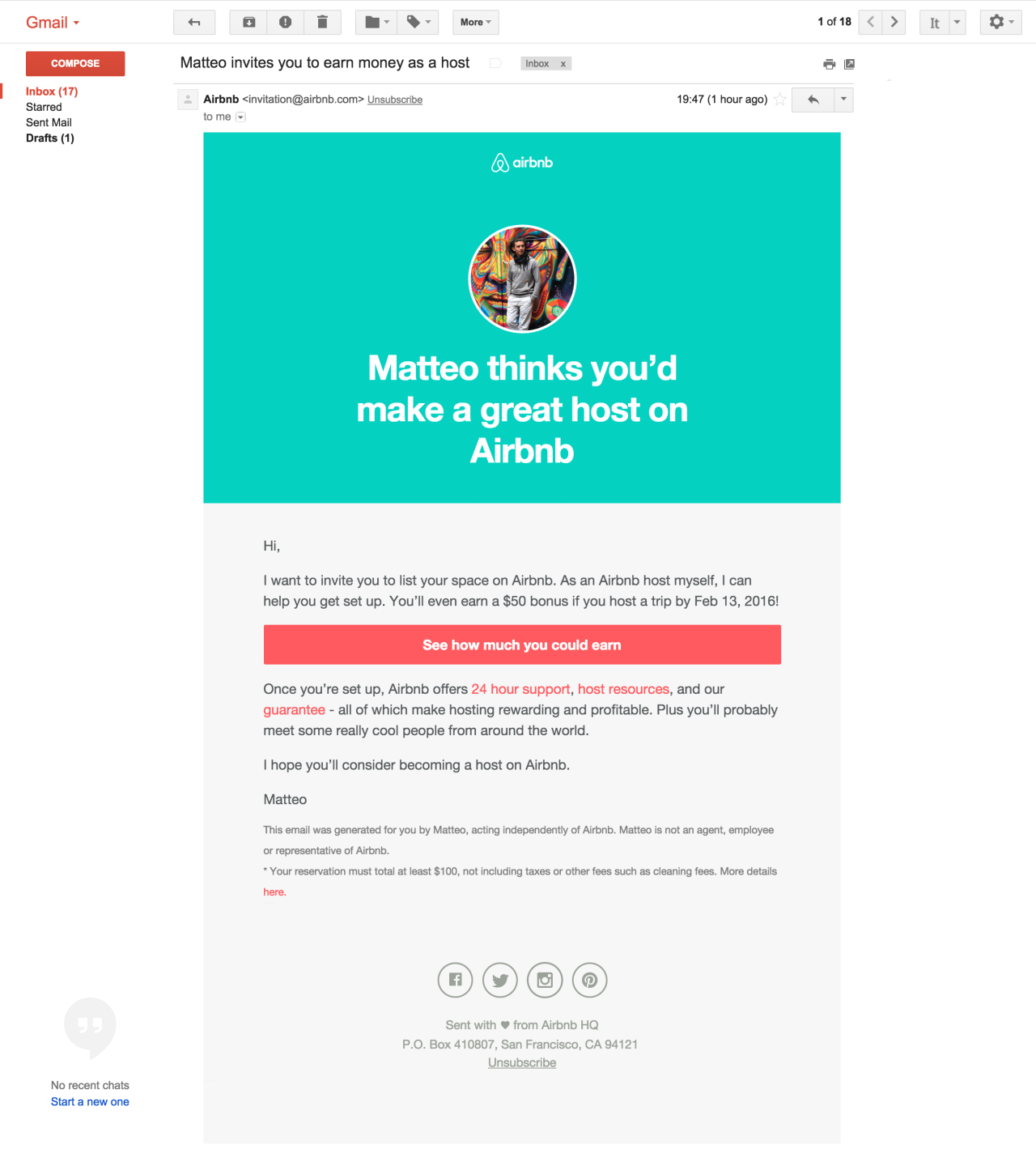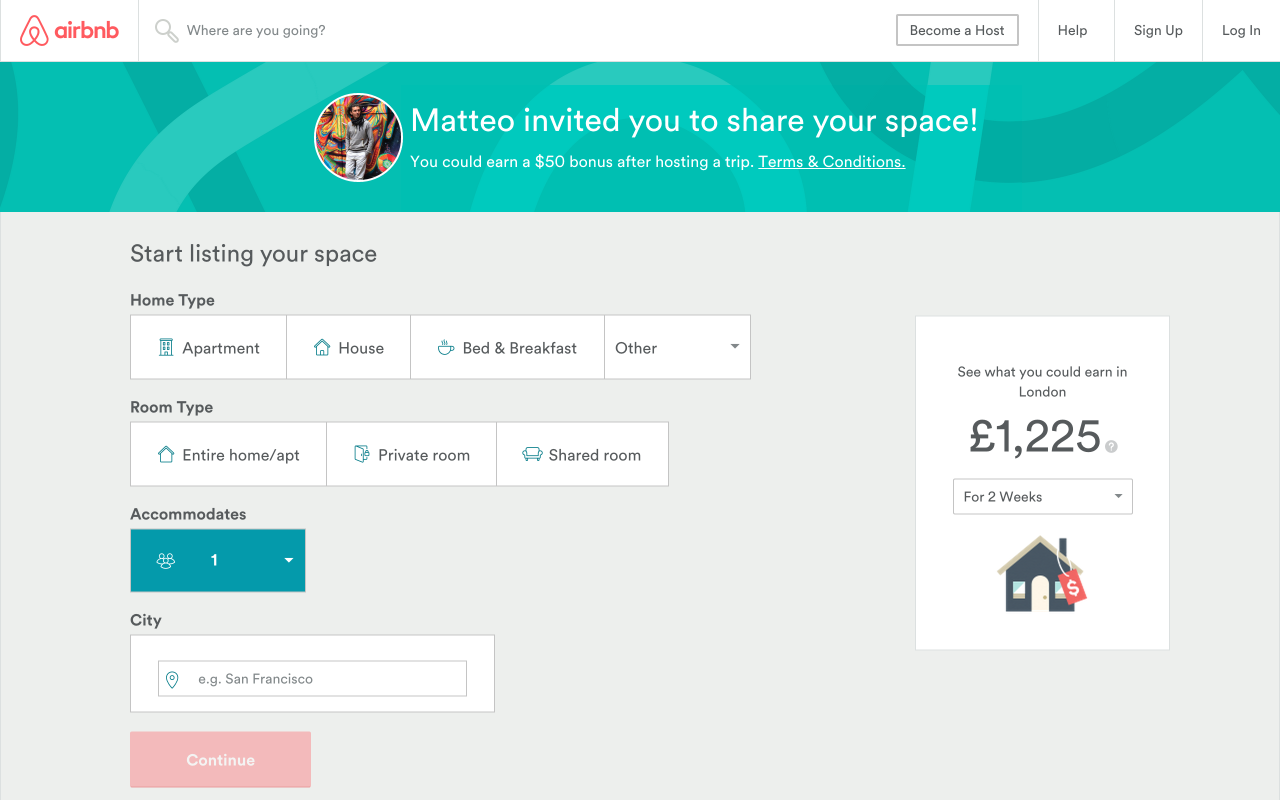
The following is a guest post by Monique Danao, a writer for CandyBar and ReferralCandy.
How do you stand out in a crowded industry?
Do you create lots of sponsored content and team up with big influencers? Or, would you spend $100,000 on ad placement?
While these techniques can help your business gain exposure, will it lead to conversions?
There’s tons of marketing advice and posts on the Internet, but have you tried word-of-mouth marketing? It’s currently one of the most effective marketing tactics.
Why is word of mouth marketing powerful?
How often do you ask for recommendations in everyday conversations? How often do you discuss brands with friends and family? I bet you do a lot.
Before we make a purchase from a new brand, we ask about the experiences of people we know. We want to get their feedback because they’re the ones we trust the most.
This makes referrals super effective. Consumers are up to 50x more likely to buy a product if it’s recommended by close friends or family. In addition, 90 percent of customers trust word-of-mouth.
…and it works both ways.
We naturally want to talk about the products that we love. We post products on Instagram or Facebook. We share travel destinations and restaurants on social media.
In short, we love talking about branded experiences.
There are 3.3 billion brand mentions every day in America. And customers acquired through word-of-mouth spend 200 percent more than the average customer and make 2x as many referrals themselves.
This is why referral marketing works.
It relies on genuine interaction between a consumer and people across their network. Sometimes the process involves referral rewards like big discounts, cash, and freebies. Sometimes it just happens naturally.
It’s not about telling first-time customers to buy your product. Instead, it rewards advocates for sharing their experiences, so they get rewarded for their loyalty, and your business gains new users.
Now how do you get started with referral marketing?
We’ve compiled 5 killer examples of businesses that have managed to stand out in their own industries thanks to a word-of-mouth strategy.
1. How Tesla used word of mouth marketing
With a valuation of $71 billion and Elon Musk at its helm, Tesla has become one of the best selling luxury automakers in the United States.
Tesla’s rise to fame is relatively fast considering that the market was saturated with established automakers like Ford and Chevrolet (GM). Despite the intense competition, the company managed to gain the world’s attention thanks to its word-of-mouth strategy.
This has been largely successful because of their cars’ superb features:
- 265 miles of all-electric driving range
- Fast next-generation superchargers
- The lowest chance of injury in a crash of any car the NHTSA has ever tested.
- The #1 Best Selling Car in the USA
- Motor Trend Car of the Year
- #1 top rated car in Consumer Reports.
- 321,000 vehicle sales a year by 2020, 48 percent CAGR (Compound Annual Growth Rate)
Since the company has an astounding list of accomplishments, it’s no surprise that they’ve gotten a lot of word-of-mouth recommendations from customers on social media.

Their recent rise to fame can be attributed to their double-sided reward referral program. A successful referral meant a $1000 Tesla credit for the referred customer and the brand advocate.
Since the average Tesla is worth $85,000, this strategy helped the company gain more than 40x ROI for every sale.
Tesla also has special rewards for their top referrers like:
- A new Tesla P90D Model S worth $130,000
- A home wall charger worth $3,000)
- An invite to Tesla’s Gigafactory Grand Opening in Nevada.
Their top referrer in 2015 got 188 referrals or about $16 million in sales!

Tesla later created a tiered rewards structure with exclusive products and experiences that are not available to the general public.
Here’s their tiered rewards structure:
- A chance to win a Ludicrous P90D Model X in a raffle
- Ten referrals: An invitation to a Tesla unveiling event
- Five referrals: Tesla wheel rims not sold to the public
- Three referrals: A Tesla Owners Jacket not sold to the public
- Two referrals: A Tesla duffel bag not sold to the public
Tesla’s overall sales strategy relied on utilizing their fan base instead of hiring salesmen and middlemen to do the job for them.
The 40x ROI and millions generated from passionate customers were enough to get the company to join the club of established automakers.
2. Uber leveraged an effective referral program
Uber revolutionized the way people hailed cabs, but they had a hard time competing with the many companies in the taxi industry.
How did they take over the transportation industry in many countries? Their beginnings can be traced back to their amazing referral program.
Uber’s business model relied on inviting new riders and drivers through personal invite codes.

They also use referral programs to increase the number of drivers using their app.
Uber drivers could get their friends to transfer from Lyft through a referral code. Whenever an Uber driver makes a successful referral, both parties can earn $500. If you were a former Lyft driver with a lot of connections, you could earn thousands just by tapping into your own network.
What if you want to be a driver but don’t have a car? No worries! Uber-owned vehicle leasing operator Lion City Rentals (LCR) rents out cars to users. By persuading your friends to rent from LCR, you and your friend can earn cash.

By making use of a referral strategy, Uber was able to grow its user base and encourage people to try their services. They were able to expand into 50+ countries in 3 years. They also gained a $120 billion valuation and ranked as the #1 cab service in over 60 countries and almost 300 cities around the world.
They could’ve created numerous marketing campaigns to encourage more users, but they understood that a good word from a friend was a lot more convincing.
3. Trello
There’s undoubtedly a lot of free project management apps on the Internet, so how can you convince your users to make an upgrade?
Trello’s referral rewards program lets users enjoy a month of Trello Gold for free after a successful referral. Users can refer up to 12 friends and get one free year with a premium account.
Free stuff is great, but using their premium features for just a few weeks, will make it hard for you to turn back. Here’s a look at their list of premium features:

In the software industry, it’s often hard to convince users to pay for an upgrade based on a list of features. Sometimes you need to let them experience the product for themselves.
Chase Sater, founder of Solvd writes:
“Getting Gold for free is great, but this is still not what ends up converting the majority of users. The much greater effect at play comes when your free month of Gold is up, and you realize that you simply cannot live without extra integrations and beautiful custom backgrounds.”
Customers don’t want to be forced to pay for something.
And if they don’t convert, at least you were able to expand your user base.
Trello’s referral program has significantly helped the brand gain 25 million users. It’s also a non-intrusive way to get customers to try out your paid features.
4. Airbnb
So you created a revolutionary app or service, but people don’t want to risk trying it out? It’s not something new.
The travel industry was crowded with hotels and travel agencies that could ensure the safety and experience of travelers.
In contrast, Airbnb’s services required users and hosts to trust strangers.
…but they were able to overcome this challenge thanks to word-of-mouth marketing.
Airbnb’s refer-a-friend program lets users earn $95 for inviting their friends to join the app. This trusted recommendation eliminated the need for background checks and an insurance policy that would help alleviate the fears of first-time users.

Users could easily import contacts from Gmail, Yahoo, and Outlook to send a referral.

Jason Bosinoff, Airbnb engineering manager, understood that Airbnb and referral experiences were both personal. That’s why it worked.
He wrote in a Medium article, “Airbnb experiences are so personal. People use Airbnb to unlock incredible experiences — anything from weekend getaways with friends, cultural exchanges, and once-in-a-lifetime events like honeymoons.”
So, it was no surprise that the company used the same method to acquire more hosts.
Similar to their user invite referral program, an existing host who makes a successful referral program can get the following:
- Existing hosts that invite their connections will earn a $100 cash reward for each new friend that hosts the first trip on Airbnb.
- Referred hosts will be awarded a $50 reward if they receive a first booking (over $100) within 150 days from the day they got invited.
Airbnb understands that more hosts meant more destinations for their users, so they were willing to pay cash instead of travel credits.
Hosts had also experienced the program, so they were more capable of convincing potential hosts to try it out for themselves.
Their host invite dashboard made it easy for them to spread the word through social media or get in touch with their contacts from Gmail.

The invited host will then receive a notification email with information on their services, how much they could earn and the possibility of meeting more people from around the world.

When users click the invite link, they can easily create a listing and set up their own profile.

The results? Referrals drove 900 percent year-on-year growth for 1st-time bookings. It also increased bookings by over 25 percent and their latest referral program produced 300 percent more bookings and sign-ups than before.

Airbnb’s Growth Product Manager, Gustaf Alströmer said, “Looking at guest bookings and hostings, our referred users performed much better than average users.”
By creating referral programs for hosts and guests, Airbnb is able to build a community of travelers and give them an opportunity to explore new destinations. It’s definitely a more preferable experience than the dull ol’ hotel rooms we’re all used to.
5. Threadbeast
Threadbeast delivers curated packages of streetwear every month based on a user’s style and preferences.
There’s a lot of fashion brands around the world, but Threadbeast manages to stand out and expand their user base thanks to their referral program.
For a successful referral, the referrer gets a free package of clothes while the friend gets a bonus package with items worth $50.

They also gave customers a guide on how best to share their referral link on Instagram. This step-by-step guide includes an image with easy-to-follow instructions:

And how well does Threadbeast do? You just need to look at all influencers posting reviews on YouTube and selfies on Instagram.

Threadbeast themselves have over 300,00 subscribers on Instagram!
There’s no limit to the number of referrals anyone can make.
Customers can also receive bestsellers or limited-edition items in exchange for tons of successful referrals.
It’s a great way to motivate existing customers to act as your very own salespeople.
Word-of-mouth marketing can skyrocket your business
Hopefully, these examples have shown you how a word-of-mouth strategy can help your brand stand out in a crowded industry.
Our examples have shown that word-of-mouth marketing is a win-win strategy.
Brands like Tesla and Airbnb have become tech giants thanks to using referrals and encouraging loyal customers to promote their products and services.
People naturally want to talk about the products they love because they want to share their experience and help improve the lives of those around them. It’s a natural process, but businesses can speed up the process through referral schemes reliant on customer relationships.
It’s also an organic and genuine process.
People won’t recommend a product they don’t trust, otherwise, their relationships will stagnate.
Can you think of any more businesses that have gained popularity thanks to a word-of-mouth strategy? Let us know in the comments below.







 Workflows
Workflows Projects
Projects Data Sets
Data Sets Forms
Forms Pages
Pages Automations
Automations Analytics
Analytics Apps
Apps Integrations
Integrations
 Property management
Property management
 Human resources
Human resources
 Customer management
Customer management
 Information technology
Information technology



Alex Gallia
Alex is a content writer at Process Street who enjoys traveling, reading, meditating, and is almost always listening to jazz or techno. You can find him on LinkedIn here